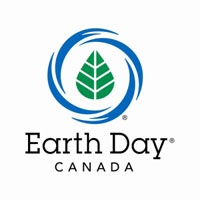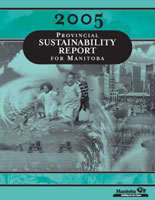
News |
- Union of BC Indian Chiefs Opposes Sun Peaks Inc.
- US Rules Against Water Pipeline Plan
- 40th Anniversary of Earth Day
- Scotland Planting Trees to Fight Emissions
- Manitoba Protected Areas Actions Resume
- World Water Day March 22nd
- Primates on Brink of Extinction
- Climate Change Causing Wolverine Declines
- Plan Nord Failing Aboriginal Peoples
- Manitoba Sustainability Report Due
- Nopiming Provincial Park Developed Without Plan
- Ontario Feed-in Tariff Programs
| Union of BC Indian Chiefs Opposes Sun Peaks Inc. | 15 March 10 |
 Neskonlith Indian Band's Chief Judy Wilson and Adams Lake Indian Band's Chief Nelson Leon have voiced their communities' alarm over lack of meaningful consultation in the face of the accelerated rate of community consultations with non-Native residents to incorporate Sun Peaks Resort as a municipal government. Neskonlith Indian Band's Chief Judy Wilson and Adams Lake Indian Band's Chief Nelson Leon have voiced their communities' alarm over lack of meaningful consultation in the face of the accelerated rate of community consultations with non-Native residents to incorporate Sun Peaks Resort as a municipal government."The Union of BC Indian Chiefs fully supports the efforts of Chief Wilson and Chief Leon to ensure the rights of their respective communities are recognized, respected and protected," stated Grand Chief Stewart Phillip, President of the Union of BC Indian Chiefs. "What started as a recreational tenure for a local ski hill, has turned into a massive four-season high-density resort which now desires to incorporate as a municipality." In 2007, the UBCIC Chiefs Council passed Resolution 2007-21 which noted efforts in Chief Wilson and Chief Leon to respond to the Sun Peaks Incorporation Study Committee. Specifically, they stated their communities' opposition to the municipal incorporation and to the proposed Ministry of Forests' road construction to Sun Peaks Resort until their Aboriginal Title and Rights were addressed and their interests fully reconciled. Grand Chief Phillip added, "The Union of BC Indian Chiefs fully supports meaningful consultation that respects Aboriginal Title and Rights and not a process where the economic or commercial interests of the privileged few trump ecological values and constitutionally protected Indigenous Title and Rights." View February 4, 2010 Union of BC Indian Chiefs news releaseView February 6, 2010 Indigenous Peoples Issues & Resources article Source: Indigenous Peoples |
|
 Print version Print version |
Top |
| US Rules Against Water Pipeline Plan | 15 March 10 |
 Manitoba has won another round in its long-running legal dispute with U.S. Bureau of Reclamation over a water-diversion project that could allow invasive species from the United States into Lake Winnipeg and to the rest of the Hudson Bay drainage basin Manitoba has been trying to stop the project in nearby North Dakota from transferring water from the Missouri River. Manitoba has won another round in its long-running legal dispute with U.S. Bureau of Reclamation over a water-diversion project that could allow invasive species from the United States into Lake Winnipeg and to the rest of the Hudson Bay drainage basin Manitoba has been trying to stop the project in nearby North Dakota from transferring water from the Missouri River.The water slated to be transferred, 13.3 million tonnes a year through a 72 kilometre-long pipeline, would be used around Minot, N.D. and would drain into the Souris River, flowing into Manitoba. Manitoba has been fighting the transfer, known as the Northwest Area Water Supply project, in the U.S. court system since 2002, claiming the venture violated U.S. law and risked causing irreparable harm through the potential spread of species not naturally found in Canada. Manitoba welcomed the decision. "While the future of the project is still uncertain, today's ruling will assist in achieving adequate measures to protect Manitoba's valuable water, including Lake Winnipeg ... from the threat of harm posed by invasive species," said Christine Melnick, Manitoba's Minister of Water Stewardship. View March 8, 2010 Manitoba Chamber of Commerce articleView March 8, 2010 CPAWS article View March 10, 2010 Globe and Mail article View US District Court Ruling - Judge Rosemary Collyer (PDF) View March 9, 2010 New York Times article Source: Globe and Mail |
|
 Print version Print version |
Top |
| 40th Anniversary of Earth Day | 15 March 10 |
 April 22 is Earth Day. Celebrated by over 1 billion people in over 170 countries Earth Day highlights events and projects on local, national and international environmental issues. The mandate of Earth Day Canada is to, "improve the state of the environment by empowering and helping Canadians to take positive environmental action". The goals of Earth Day are to create positive public awareness, empower and encourage Canadians to take environmental action, address challenges to Canada's environment, and to foster and maintain the celebration of earth day annually. April 22 is Earth Day. Celebrated by over 1 billion people in over 170 countries Earth Day highlights events and projects on local, national and international environmental issues. The mandate of Earth Day Canada is to, "improve the state of the environment by empowering and helping Canadians to take positive environmental action". The goals of Earth Day are to create positive public awareness, empower and encourage Canadians to take environmental action, address challenges to Canada's environment, and to foster and maintain the celebration of earth day annually.This year Earth Day is a call to action for a global referendum on climate change. Other core issues supported are advocacy, conservation and biodiversity, education, energy, food and agriculture, green economy, recycling and waste reduction, sustainable development and water. This year Earth Day is running 47 campaigns, 19 petitions, 99 scheduled events with 10, 000,094 pledges of support. View Earth Day Network websiteView Earth Day Canada website View The World Wildlife Fund Earth Day website Sources: Earthday.org, Earthday.ca |
|
 Print version Print version |
Top |
| Scotland Planting Trees to Fight Emissions | 15 March 10 |
 The Scottish Government has promised to plant 100 million trees by 2015 to try to cut emissions. Planting will represent an increase in Scotland's forested areas of 3.7% as part of a global pledge made by Climate Group members. The Scottish Government has promised to plant 100 million trees by 2015 to try to cut emissions. Planting will represent an increase in Scotland's forested areas of 3.7% as part of a global pledge made by Climate Group members.As a nation, Scotland is attempting to reduce emissions by 42% by 2020 while still contributing to other initiatives such as food security. Planting this number of trees is equivalent to planting 10, 000 hectares a year and will increase CO2 absorption, provide sustainable building sources and a source of renewable energy. The decision to plant the trees is part of a movement to encourage government, business and communities around the world to plant a tree for every person to help counter climate change. As a leader in international action against climate change, Scotland is encouraging the rest of the world to follow its lead and is advocating for an increase in European Union emission reduction targets for 2020. The Climate Group was formed in 2005 and includes Manitoba, Ontario, Quebec, and British Columbia in Canada, and various governments, states and businesses from around the world, including Scotland. View March 5, 2010 Scottish Government press releaseView Climate Group website View March 8, 2010 Low Carbon Economy press release Sources: Earth News, Edmonton Journal |
|
 Print version Print version |
Top |
| Manitoba Protected Areas Actions Resume | 12 March 10 |
 Manitoba Wildlands has released the annual Manitoba Protected Areas Grade and technical assessment. The grade for protected area actions during 2009 shows the years of net loss in protected lands may be over. Manitobans now have reason to hope the Selinger government intends to catch up on delayed decisions and commitments for protected areas establishment, especially in our boreal forest regions. Manitoba Wildlands has released the annual Manitoba Protected Areas Grade and technical assessment. The grade for protected area actions during 2009 shows the years of net loss in protected lands may be over. Manitobans now have reason to hope the Selinger government intends to catch up on delayed decisions and commitments for protected areas establishment, especially in our boreal forest regions.The 2009 grade, a C, reflects steps taken late in 2009 to establish 6 new protected areas, two of which are of moderate size. "The annual protected areas report card is a really helpful tool. It gives Manitobans an easy to understand snap shot of how our public natural areas are being managed. The Wilderness Committee agrees [with the findings] that our boreal regions are largely unprotected still, and action is needed before more development is authorized," said Eric Reder, Campaign Director for the Wilderness Committee. "We have frozen the third criteria (natural regions represented) until the Selinger government confirms its technical, ecological and consultation standards, and puts a Protected Areas Strategy for Manitoba in place. The technical assessment for this year, which includes bonus and penalty actions, shows improvement, but there is a lot of catching up to do," commented Gaile Whelan Enns, director of Manitoba Wildlands. As finance minister, Manitoba Premier Greg Selinger made significant protected areas commitments. View 2009 Protected Areas Grade with assessmentView 2009 Protected Areas map with chart of actions (PDF) View Manitoba Wildlands Protected Areas Audit 2009 View Manitoba Wildlands Protected Areas Grades, previous years Source: Manitoba Wildlands |
|
 Print version Print version |
Top |
| World Water Day March 22nd | 10 March 10 |
 World Water Day grew out of the 1992 United Nations Conference on Environment and Development (UNCED) in Rio de Janeiro. The United Nations General Assembly has designated 22 March of each year as the World Day for Water. World Water Day grew out of the 1992 United Nations Conference on Environment and Development (UNCED) in Rio de Janeiro. The United Nations General Assembly has designated 22 March of each year as the World Day for Water.The 2010 World Water Day, coordinated by the UN Environment Programme, slogan is "Clean Water for a Healthy World." UN-Water dedicates this day to the theme of water quality, reflecting its importance alongside quantity of the resource in water management. World Water Day 2010 activities will communicate messages on water quality, ecosystems and human well-being. View Official UN World Water Day websiteView United Nations Water website View more information on Wikipedia View US World Water Day website View World Water Day video View March 22, 2010 UN-Water Statement on Water Quality Source: World Water Day website, UN, UNEP |
|
 Print version Print version |
Top |
| Primates on Brink of Extinction | 10 March 10 |
 A recent report, Primates in Peril: The World's 25 most Endangered Primates 2008-2010, shows staggering estimates that half of all primate species in the world are in danger of becoming extinct. Destruction of habitat, illegal wildlife trade and commercial bush meat hunting is causing a rapid decline in primate numbers that only immediate conservation efforts can stop. A recent report, Primates in Peril: The World's 25 most Endangered Primates 2008-2010, shows staggering estimates that half of all primate species in the world are in danger of becoming extinct. Destruction of habitat, illegal wildlife trade and commercial bush meat hunting is causing a rapid decline in primate numbers that only immediate conservation efforts can stop.Primates in Peril, was compiled by conservation and primate experts from around the world with first hand knowledge of primate population numbers and habitat conditions. Experts agree that 5 primate species from Madagascar, 6 species from Africa, 11 species from Asia and 3 species from Central and South America are all severely endangered. In worst case scenarios, only a few dozen animals are left in the wild. The 25 species listed in the report represent a wide range of primates from lemurs to gorillas. According to experts, if conservation efforts by government and local communities are not initiated soon, many of these species will become extinct. View February 18, 2010 National Geographic News Watch articleView IUCN Primate Specialist Group Listing View February 18, 2010 Conservation International press release View 2009 Report, Primates in Peril (PDF) Source: National Geographic, Primates in Peril, IUCN |
|
 Print version Print version |
Top |
| Climate Change Causing Wolverine Declines | 10 March 10 |
 Recent research in Population Ecology by wildlife biologist Dr. Jedediah Brodie of the University of Montana, shows wolverine numbers are falling across North America due to the vanishing snowpack. Dr. Brodie has been gathering data on snowpack levels across Canada and has found a decline in snowpack depth in all provinces between 1968 and 2004. She is using wolverine populations to determine the ecological impacts of the declining snowpack. Recent research in Population Ecology by wildlife biologist Dr. Jedediah Brodie of the University of Montana, shows wolverine numbers are falling across North America due to the vanishing snowpack. Dr. Brodie has been gathering data on snowpack levels across Canada and has found a decline in snowpack depth in all provinces between 1968 and 2004. She is using wolverine populations to determine the ecological impacts of the declining snowpack.The wolverine is the largest member of the weasel family and specially adapted for life on the snow. It feeds off carrion, hares, marmots and small rodents. Dr Brodie found that where winter snowpack levels are declining most quickly wolverine populations are also declining most quickly. Dr. Brodie attributes the decline to a number of factors including less food availability from ungulates being killed in deep snow, and less insulation from the snow for small rodent populations. Canada's eastern wolverines are already endangered species and western populations are rated as being of special concern. Dr. Brodie recommends that wolverines be closely monitored and as climate change worsens, trapping and disturbance of wolverine habitat should be reduced. View February 3, 2010 BBC Earth News press releaseView February 3, 2010 Edmonton Journal press release View February 3, 2010 Softpedia article View February 4, 2010 Mother Nature News article View February 5, 2010 Canadian Geographic article Sources: Earth News, Edmonton Journal |
|
 Print version Print version |
Top |
| Plan Nord Failing Aboriginal Peoples | 10 March 10 |
 Plan Nord is Quebec's latest economic development plan for the far reaches of Quebec. It includes $19 billion in new energy projects, a 60% increase in mining exploration, and 2000 new jobs between 2010 and 2016. However, the plan is facing opposition from First Nations. Plan Nord is Quebec's latest economic development plan for the far reaches of Quebec. It includes $19 billion in new energy projects, a 60% increase in mining exploration, and 2000 new jobs between 2010 and 2016. However, the plan is facing opposition from First Nations.Plan Nord planning applies to all areas north of the 49th parallel, an area spanning over one million square kilometers and 72% of all of Quebec. The area is inhabited by 121,000 people, 33,000 of those are Cree, Inuit, Naskapi or Innu, representing four different nations. Despite Quebec and Labrador government promises to work with communities affected and to be socially responsible in the planning process, First Nations are raising concerns against Plan Nord. Communities are concerned large scale developments will disrupt traditional lifestyles, impact territories, cause pollution and not be based on meaningful consultation and accommodation of concerns. Development intentions in Plan Nord, has caused the Assembly of First Nations of Quebec and Labrador to ask Prime Minister Stephen Harper to intervene. View January 12, 2010 CBC News articleView December 2009 Lavery Law and Business publication (PDF) View January 29, 2010 The Nation: Independent Aboriginal Publications press release View Plan Nord (PDF) Sources: CBC, Laverly Law and Buisness |
|
 Print version Print version |
Top |
| Manitoba Sustainability Report Due | 10 March 10 |
 The 2010 Sustainability Report for Manitoba is due, as required under The Sustainable Development Act. This report is to provide Manitobans with current information on important sustainability issues and trends. It is a way of monitoring Manitoba's environmental sustainability by tracking and interpreting key indicators. The 2010 Sustainability Report for Manitoba is due, as required under The Sustainable Development Act. This report is to provide Manitobans with current information on important sustainability issues and trends. It is a way of monitoring Manitoba's environmental sustainability by tracking and interpreting key indicators.By reporting on these indicators, government can assist Manitobans in being informed and encourage them to participate in the long-term strategies for sustainability in Manitoba. The Act requires a report every five years, the last one was released in the first half of 2005. The 2010 report will potentially indicate where data sources have improved, and allow comparison to report contents five years before. "Manitoba's sustainable development principles and guidelines are frequently being ignored in planning and licensing. Also data sources need to be strengthened in order to provide clear ongoing status reports for Manitoban about our environment, and our communities. We hope the 2010 report is already moving through peer review, and will be released soon," Gaile Whelan Enns, director of Manitoba Wildlands. View 2005 Provincial Sustainability Report for ManitobaView Manitoba Sustainable Development Act Source: Manitoba Conservation |
|
 Print version Print version |
Top |
| Nopiming Provincial Park Developed Without Plan | 5 March 10 |
 Cottage owners joined with Sagkeeng First Nation, the Manitoba Liberal Party and Manitoba Wildlands to speak out about a power line project in Nopiming Provincial Park. The 19-kilometre hydro line project, which received provincial approval November 2009 following a non public environmental assessment, is set to start in the spring and be completed by September 30. There is only a 25 year old plan for the park, with no update since the new Parks Act. Cottage owners joined with Sagkeeng First Nation, the Manitoba Liberal Party and Manitoba Wildlands to speak out about a power line project in Nopiming Provincial Park. The 19-kilometre hydro line project, which received provincial approval November 2009 following a non public environmental assessment, is set to start in the spring and be completed by September 30. There is only a 25 year old plan for the park, with no update since the new Parks Act.Less than half of the 156 cottages in Long Lake and Beresford Lake will be hooked up to electricity service. Alternatives to the project, such as solar power, were not investigated. Only 72 cottagers have paid the $10,000 fee. Cottage owner Brian Gudmundson states Manitoba Hydro is trying to put in the power line without proper consultation or majority support. "A complete pause [of the project] is what is required and anything less than that would be to put a rubber stamp on this flawed process – and that is wrong for all Manitobans," states Gudmundson. The Sagkeeng First Nation also opposes the project and has criticized the province for failure to appropriately notify and accommodate Sagkeeng concerns. These include being blocked from any economic benefit from a project in their traditional territory. A common theme among concerns is that the project will lead to further development in the park. View February 26, 2010 CBC articleView January 30, 2009 Manitoba Wildlands article Source: CBC |
|
 Print version Print version |
Top |
| Ontario Feed-in Tariff Programs | 3 March 10 |
 The Ontario feed-in tariff (FIT) program through the Ontario Power Authority (OPA) provides a straightforward way to contract for renewable energy generation. It provides standardized program rules, prices and contracts for power produced through renewable projects. Qualifying renewable energy sources include bioenergy (biogas, biomass and landfill gas), solar photovoltaic (PV), waterpower and wind. The Ontario feed-in tariff (FIT) program through the Ontario Power Authority (OPA) provides a straightforward way to contract for renewable energy generation. It provides standardized program rules, prices and contracts for power produced through renewable projects. Qualifying renewable energy sources include bioenergy (biogas, biomass and landfill gas), solar photovoltaic (PV), waterpower and wind.The program is divided into two streams - FIT and microFIT. The FIT Program is for renewable energy projects that can generate more than 10 kilowatts (kW) of electricity. Very small projects, at a home or small business which generate 10 kW or less work under the microFIT Program. The overall benefits of feed in tarriffs are: participates are paid for the power they produce and deliver to the province’s power grid, while contributing to a healthier environment and creating new local businesses and green jobs. View FIT websiteView Micro-FIT website View Requirements for the FIT programs (PDF) Source: FIT Website |
|
 Print version Print version |
Top |


 RSS Feeds:
RSS Feeds: